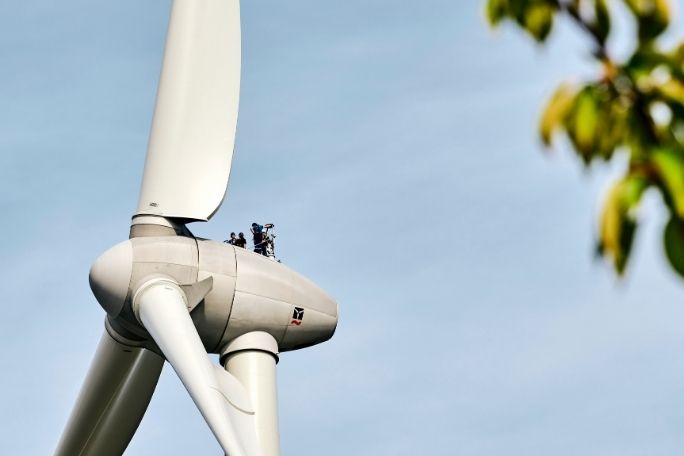Lesson summary
Students experiment using trial and error and then refine their adjustments on a model wind generator. They find the best blade adjustments to maximize the efficiency of a wind turbine. Activity adapted from Save the Earth Science Experiments*.
Learning intentions:
Students will...
- identify the blade shapes that are most successful at creating energy when used in a wind turbine
- demonstrate ability to work independently or collaboratively to follow instructions and complete activity
- demonstrate ability to recognise and use a range of materials and tools to complete activity
- demonstrate ability to use models to explain or demonstrate a concept
- demonstrate ability to write and articulate scientific observations
- demonstrate the ability to work independently or collaboratively to research and compile information on issues and to communicate lessons from research through art or literacy exercises (extension).
Lesson guides and printables
Lesson details
Curriculum mapping
Australian curriculum content descriptions:
Year 7 Science:
- Change to an object’s motion is caused by unbalanced forces acting on the object (ACSSU117)
- In fair tests, measure and control variables, and select equipment to collect data with accuracy appropriate to the task (ACSIS126)
Year 8 Science:
- Energy appears in different forms including movement (kinetic energy), heat and potential energy, and causes change within systems(ACSSU155)
- In fair tests, measure and control variables, and select equipment to collect data with accuracy appropriate to the task (ACSIS141)
Syllabus Outcomes: SC4-5WS, SC4-6WS, SC4-10PW.
Indoor or outdoor activity: Indoor
Duration of activity: 45 mins
Level of teacher scaffolding: Gather and prepare equipment, assist students with experiment.
Homework and extension opportunities: This activity has opportunities for homework and extension.
Activity adapted from: Save the Earth Science Experiments (2008), Elizabeth Snoke Harris, Lark Books, New York, USA.
Resources required
Each group or pair will need the following:
- A Rubber Band
- 1.5 Volt Dc Motor, Ruler
- Wire Cutters
- Insulated Wire, Voltmeter Or Multimeter
- 18 Large paper clips
- Scissors
- Thin cardboard
- Cork
- Masking tape
- Fan
- Marker pens
- Electrical tape (optional)
- Worksheet 1, 2 and 3 (or Create your own worksheet 3
Additional info
This is an original Cool.org lesson. Facts and figures in these lessons may have changed since this lesson was published. We always endeavour to update our resources in a timely manner, but if you see an error or issue in our resources please get in touch with us.


Welcome back!
Don't have an account yet?
Log in with:
By signing up to Cool.org you consent and agree to Cool's privacy policy to
store, manage and process your personal information. To read more, please see
our privacy policy here(Opens in new tab).
Create your free Cool.org account.
Many of our resources are free, with an option to upgrade to Cool+ for premium content.
Already have an account?
Sign up with:
By signing up to Cool.org you consent and agree to Cool's privacy policy to
store, manage and process your personal information. To read more, please see
our privacy policy here(Opens in new tab).